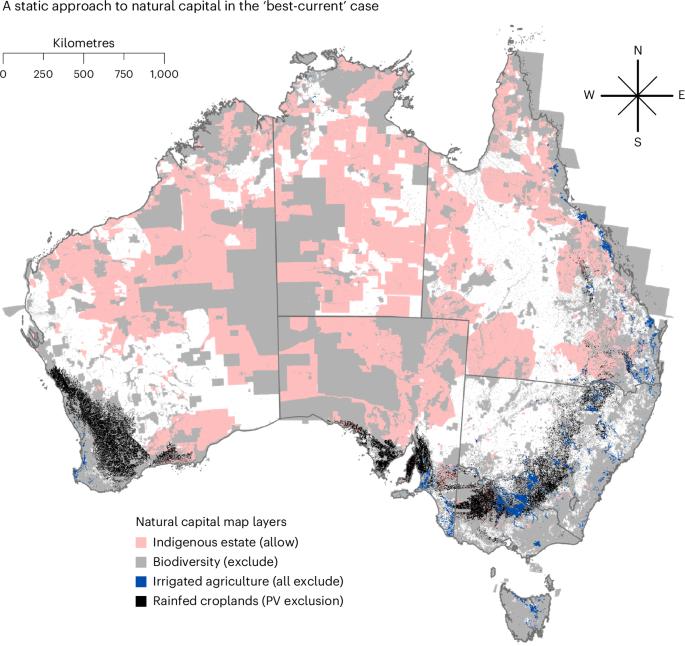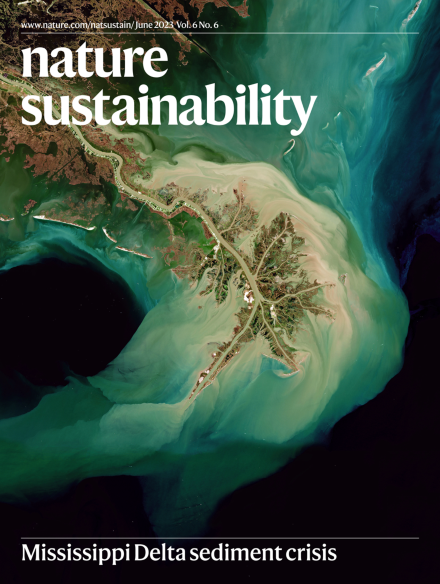谈判净零转型对自然资本的风险
IF 27.1
1区 环境科学与生态学
Q1 ENVIRONMENTAL SCIENCES
引用次数: 0
摘要
全球和各国在气候问题上的承诺意味着清洁能源和工业基础设施的快速和大规模部署,这可能对自然资本和其他重要土地用途产生严重影响。到2060年,澳大利亚净零排放解决方案的先前建模将在111,000平方公里的土地上建立新的可再生基础设施(约为塔斯马尼亚大陆面积的1.7倍)。该解决方案使用单一、静态和确定的土地可用性地图,使其极易与涉及广泛土地管理的其他国家目标竞争。我们将气候目标与澳大利亚土著地产的一致处理以及对生物多样性和农业的不同处理相结合,展示了一种方法,可以在不确定的未来土地利用规划中实现净零目标和自然资本的可持续利用。我们已经确定了澳大利亚的一些地区,在这些地区,如果没有对气候行动的合作考虑,自然资本保护就会变得不可行或成本更高。我们的方法和方法具有全球相关性,并突出了主动、协作和定期重新考虑自然资本风险的重要性,我们不仅计划我们的净零解决方案,而且还依赖于维持生命和生活方式的关键系统。净零政策可能给土地使用带来压力,这可能与保护自然景观、文化遗址和农业区相冲突。现在,一项研究将国家能源模式与积极主动的协作规划结合起来,设计出保护自然资本和解决各种问题的净零路径。本文章由计算机程序翻译,如有差异,请以英文原文为准。

Negotiating risks to natural capital in net-zero transitions
Global and national commitments on climate imply clean energy and industrial infrastructure deployment at a speed and scale that could have serious implications for natural capital and other important land uses. Prior modelling of a net-zero emissions solution for Australia sites new renewable infrastructure on 111,000 km2 of land (approximately 1.7 times the area of mainland Tasmania) by 2060. That solution uses a single, static and certain map of land availability, making it immediately vulnerable to competition with other national goals involving widespread land management. We have incorporated climate goals with consistent handling of Australian Indigenous estate and varying treatments for biodiversity and agriculture to demonstrate an approach to navigate the risks to achieving both the net-zero goal and sustainable use of natural capital in an uncertain land-use planning future. We have identified regions of Australia in which modelled renewable infrastructure is rendered infeasible or more costly when natural capital protection occurs without collaborative consideration of climate action. Our approach and methods are relevant globally and highlight the importance of proactively, collaboratively and regularly reconsidering the risks to the natural capital on which we not only plan our net-zero solutions but also rely on for the critical systems that sustain life and lifestyles. Net-zero policies can put pressure on land use, which can conflict with preserving natural landscapes, cultural sites and agricultural areas. Now a study integrates national energy models with proactive and collaborative planning to design net-zero pathways that conserve natural capital and address diverse concerns.
求助全文
通过发布文献求助,成功后即可免费获取论文全文。
去求助
来源期刊

Nature Sustainability
Energy-Renewable Energy, Sustainability and the Environment
CiteScore
41.90
自引率
1.10%
发文量
159
期刊介绍:
Nature Sustainability aims to facilitate cross-disciplinary dialogues and bring together research fields that contribute to understanding how we organize our lives in a finite world and the impacts of our actions.
Nature Sustainability will not only publish fundamental research but also significant investigations into policies and solutions for ensuring human well-being now and in the future.Its ultimate goal is to address the greatest challenges of our time.
 求助内容:
求助内容: 应助结果提醒方式:
应助结果提醒方式:


